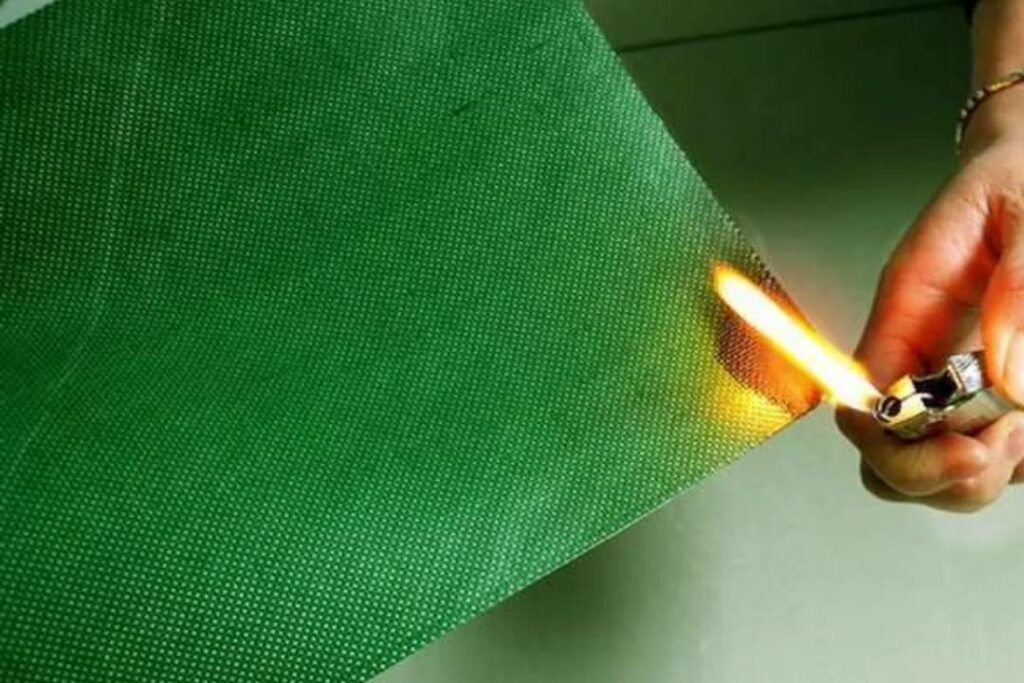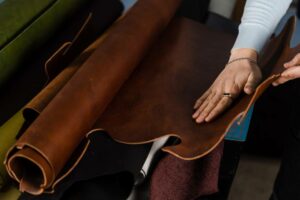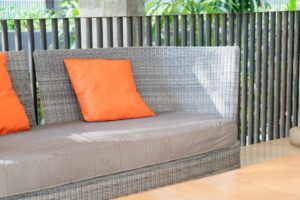As awareness about fire safety grows, an increasing number of consumers are actively seeking ways to reduce risks as much as possible, one of which is by utilising fire-resistant fabrics.
In this article, we look into fire-resistant fabrics, clarifying what they are and highlighting the global testing standards they must meet to be considered fire-resistant.
Furthermore, we distinguish between naturally fire-resistant fabrics, which inherently possess fire-retardant properties, and those that are chemically treated to gain these qualities.
Understanding this distinction is crucial for consumers and industry professionals alike, as it impacts both the functionality and application of these materials in various contexts.
What are Fire-Resistant Fabrics?
Fire-resistant fabrics are categorised based on specific criteria, including how long they can burn and withstand high temperatures.
To determine their fire-retardant capabilities, these materials undergo rigorous testing in independent laboratories.
Key international standards, such as ISO 11612 and NFPA 2112, provide guidelines for assessing the fire-retardant properties of these fabrics.
The testing procedures typically involve exposing the fabrics to various fire-related conditions, such as gas burners, smouldering cigarettes, and dry wood stacks.
These tests are crucial in evaluating how effectively the fabrics can resist different types of fire scenarios.
Read More: Safety Vinyl Flooring Malaysia: A Must-Have for Industries
What are the Differences Between Natural & Chemically Treated Fire-Resistant Fabrics

Fire-resistant fabrics can be divided into two categories: those that are naturally fire-retardant and those that have been treated to be fire-resistant.
1. Inherent Fire-Retardant Characteristics (IFR)
Some fabrics are engineered with fire resistance embedded into the molecular structure of their fibres.
These intrinsic properties are permanent, ensuring that the fabric maintains its fire-resistant qualities throughout its lifespan.
2. Naturally Fire-Resistant Fabrics
On the other hand, naturally fire-resistant fabrics are materials that inherently possess qualities to resist ignition and slow down flame spread. The following are several examples of fabrics that fall into this category:
a. Wool
When exposed to heat or flame, wool fibres demonstrate exceptional resistance and can even extinguish minor fires by themselves.
b. Silk
Although not as fire-resistant as wool, silk burns at a slower rate compared to many other fabrics.
What’s more, under certain conditions, silk can potentially smother fires, making it a valuable option in specific applications where fire safety is a priority.
c. Acrylic, Polyester, and Nylon
Acrylic, polyester, and nylon fabrics are classified as fire-resistant because of their relatively higher ignition thresholds compared to other synthetic materials.
While not inherently fireproof, these fabrics provide enhanced fire resistance, particularly when treated with fire-retardant chemicals.
3. Common Techniques to Enhance Fire Resistance
Beyond naturally fire-resistant fabrics, a range of techniques and treatments can also be employed to enhance the fire resistance of other fabrics:
a. Back-Coating
Back-coating involves applying a fire-retardant back-coating to fabric, enhancing its fire resistance.
This treatment often results in a stiffer fabric texture, which can be beneficial in applications like upholstery, where maintaining shape and integrity against fire or heat exposure is crucial.
b. Dipping Method
The dipping method is another technique to increase fabric fire resistance. It involves immersing the fabric in a special chemical mixture that reacts to fire by quelling flames.
This chemical treatment helps the fabric resist ignition and slow flame spread, enhancing fire safety in various applications.
How to Care for Fire-Resistant Upholstery

1. Washing
Contrary to popular belief, washing certain fire-resistant fabrics does not reduce their fire resistance.
These fabrics are engineered to meet modern demands and can often undergo machine washing without compromising their fire-protective properties.
2. Environmental Impact and Sustainability
Fire-resistant fabrics are environmentally friendly and designed with optimised water absorption rates that allow for less water consumption during washes.
These characteristics enhance their sustainability, making them an appealing choice for eco-friendly upholstery options.
Read More: Maintaining Leather Car Seats in Malaysia: Vital Care Tips
Enhance Your Fire Safety with Kintex’s Outdoor Fabric
In conclusion, fire-resistant fabrics are crucial for ensuring safety in a range of environments, from homes to commercial spaces.
As fire safety becomes a more prominent priority, these fabrics are becoming vital in responsible and safe upholstery design.
Leveraging innovative techniques and extensive industry experience, Kintex offers an array of outdoor upholstery fabrics ideal for creating durable furniture designs. Explore our diverse collection today!







